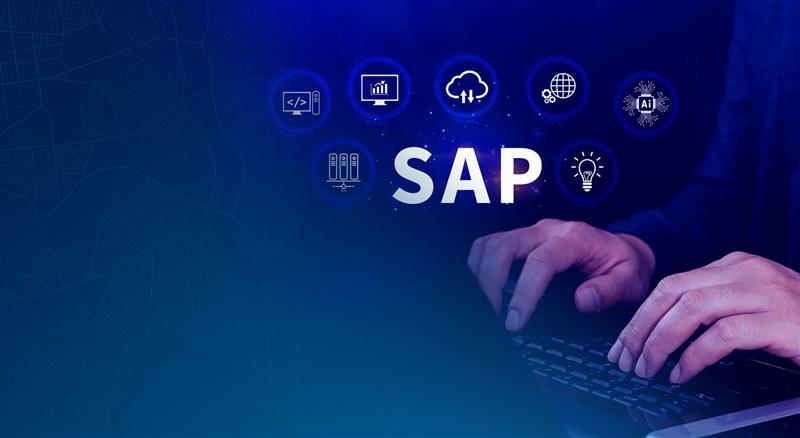Contents
At CyberTech, we have always believed in putting our customer’s needs first. That is why we bring to you this series of blog posts that aims to walk in the shoes of our clients to highlight the trials and tribulations of a modern-day organization. The blogs will also be providing some light on a prospective technology-first mindset to overcome such bottlenecks.
Introduction
COVID-19 pandemic has brought about unprecedented problems for businesses and communities. Many of the affected regions lie at the heart of several global supply chains. which includes both traditional and Digital Supply Chain networks. Hard data is missing, there are growing worries about diminishing stocks (or idle stocks), and businesses are worried that they won’t be able to fulfill their contractual obligations on time. The interruption to supply networks is extremely severe since the virus is still a menace and some regions and economies are under lockdown while others are emerging into a totally changed world. As the economies recover, the supply chain will be critical to distributing goods and services promptly, safely, and securely. On a global scale, some of the sectors were hit particularly hard. 97% of industrial product companies experienced a negative impact of the pandemic on their operations. In addition, 47% of companies reported disruption in their workforce. And most organizations are now looking for the ‘Million-dollar pill’ for all their supply chain issues. (https://www.ey.com/en_gl/supply-chain/how-covid-19-impacted-supply-chains-and-what-comes-next)
What to look at now
Today’s key decision makers are faced with several challenges when it comes to preparing their supply chain for rapid ripples in the post covid era. Given the uncertain times, it becomes easier to relate how the holy trifecta for project management – Time, Scope & Cost – could be juxtaposed here to better understand the actions of the key decision makers. Most organizations today need to rethink their strategy to on their core competitive strengths while adopting a collaborative partnership approach.
Before Covid-19, there was a time when businesses balanced two sides, one the supply side uncertainty and the other the demand side uncertainty. Post-Covid, we have a similar situation again. And added to these woes are new ones in terms of raw material price fluctuations and resource unavailability. We now stare at a test of the ability of a supply chain to be resilient yet nimble. An agile supply chain framework that provides flexibility in sourcing & fulfilment on the upstream side and a comprehensive demand planning and forecasting solution on the downstream side is a holistic way to approach this problem. An agile supply chain in today’s era can be achieved by following the 5-way system:

1. Encourage data driven decisions to improve visibility
A data-driven approach to supply chain management is the strategic use of data to better predict production and inventory changes closer to real time. This in turn empowers faster decision-making. A data-driven strategy often employs more recent data sources, like those produced by AI technologies, to create forecasts. Supply chain leaders and other stakeholders should identify all the data that can help them make important supply chain decisions.
2. Create a future-ready workforce
Reskilling the workforce to be healthy and proactive as they are critical organizational success factors. Paramount progress can be made in this direction through inculcating a culture where employees engage in a virtuous cycle of unlearn-learn-relearn. Reskilling/upskilling of employees allows organizations to adopt emerging technologies at scale in vulnerable areas. Organizations that maximize value generation from Human Capital, build long term resilience across the entire value chain.
3. Know & accept the vulnerabilities in your supply chain
Perform operational risk assessment on critical business functions and access critical data across all tiers. Apply business remodeling techniques in case of vulnerabilities. The raw materials that are more at risk of intentional threats, such as adulteration or substitution, can then be identified through this procedure. Following this identification, relevant controls can be created and implemented.
4. Build a customer-centric supply chain
A customer-centric supply chain is focused on delivering both profit and high-value customer experience. Build supply chains that prioritise your customers by leveraging your experience in marketing and R&D. Nature of industry determines whether companies operate on a “push”/”pull” cycle. However, supply chains that have an ear on the ground, incorporate customer feedback tend to be nimble and adaptive to demand fluctuations.
5. Create Micro Supply Chains
Get closer to your customers with decentralization, additive manufacturing, last mile advances and machine learning. Micro supply chains strike a compromise between the value provided by variety and the cost of complexity. They let businesses tailor their policies, production systems, flows, and products to target particular market segments since they are built on customers rather than processes.
How CyberTech helps your firm in this direction
The 5 ways mentioned require a “Single Source of Truth” mindset from organizations. Once an organization sets out to have this mindset, technology becomes an enabling function. At CyberTech, we provide tailormade ERP implementation solutions from SAP S/4HANA that can further your cause in this direction. Based on our experience with our customers and looking at industry trends, a Cloud ERP solution provides a better fit with case-by-case customization as deemed necessary. Cloud brings with it multiple advantages which interlock to provide synergistic outcomes which far outweigh the one-time transformation costs most organizations incur. This is primarily possible due to its Opex (Operational expenditure) nature which inherently reduces payback periods. Most importantly, the cloud solves for scale and resource allocation through virtualization, allowing organizations to sharpen their competitive advantage. We are quite aware of regulatory limitations an organization might have or an approach to maintaining critical data in-house. However, the beauty of the cloud, lies in the simple aspect that it provides Private, Public, or Hybrid solutions which cater to different customers, regulatory needs, and industry scenarios.

At CyberTech we are aware of the ground reality in terms of an organisation’s budget challenges and capital allocation decisions. The heuristic we suggest to our customers in this regard is a 2-prong approach:
- A list of must-have, nice to have, good to have a matrix to document your prospective solutions for your challenges
- Focus on Opex based solutions as opposed to Capex based solutions to maintain a resilient balance sheet during such periods of raising cost of capital
Summarizing:
Before we end this post, let me briefly summarize the essence of this post.
In the Post-Covid era, most organizations are facing supply chain pressures due to fractures and fault lines across the chain. In such a scenario, organizations need to relook at their supply chain strategies. For most organizations, the challenge is to create resilient and agile supply chains while repairing the existing fissures. The answer to this issue lies in following the 5-ways to creating a sustainable supply chain:
- Encourage data driven decisions to improve visibility
- Create a future-ready workforce
- Know & accept the vulnerabilities in your supply chain
- Build a customer-centric supply chain
- Create Micro Supply Chains
Adieu from us folks at CyberTech for now, stay tuned for our next post where we cover some other organizational challenges with a technology-first mind-set.


